What? |
|---|
|
Hachimantai (八幡平) is both the name of a city as a mountain as a plateau. The plateau is home to several peaks of which Mount Hachimantai stands tallest at 1613 meters. Many walking and hiking courses cross the mountain, all varying in difficulty. Most famous is the Dragon Eye Lake which can only be seen for around two weeks in May. Known under another name but equally located in Hachimantai is the Matsuo Mine Archives Museum (松尾鉱山資料館). The mine itself closed its doors long ago and doesn’t exist anymore, but it lives on in the museum as well as in the abandoned apartments blocks on the slope of Mount Hachimantai. The Yakehashiri Lava Flow (焼走り熔岩流) is a stretch of cooled lava from an eruption of Mount Iwate in the 18th century. There is one kilometer path on this barren ground. |
Where? |
|
The top of Hachimantai can be reached by bus from Morioka (盛岡) in Iwate Prefecture (岩手県), but there is only one a day, and two additional ones that require a transfer at Higashi Hachimantai Kotsu Center (東八幡平交通センター). From November to April the roads are closed making the mountain inaccessible. The Yakehashiri Lava Flow can only be reached by car. The nearest station is the Obuke Station (大更駅) which is still a 15 minute taxi ride away. The Matsuo Mine Archives Museum is a 5 minute walk from the aforementioned Higashi Hachimantai Kotsu Center bus stop. The apartment ruins can only be reached by car, but as it’s located on the same road to reach Hachimantai, it is inaccessible between November and April. 
|
URL |
|
Japan Guide Outline (Hachimantai) Towada-Hachimantai National Park Visit Iwate Visit Hachimantai Onsenkyo Voyapon |
When I’m going somewhere by car and I pick my destination, I want to see as much as possible between my point of departure and that destination. Case in point, today I would travel to Hachimantai Plateau for a walk and an onsen, but something else along the way caught my attention.
A first little detour was a one kilometer walk though a lava field. Lava turned to stone, that is. The Yakehashiri Lava Flow is a wide and impressive natural phenomenon that doesn’t take up a lot of time and which is definitely worth a visit. Mount Iwate was shrouded in clouds, which was pity, but as the forecast predicted rain and wind I was very happy with the outcome.
Completely different then.
In what is now called Hachimantai city, there used to be a sulfur mine that produced 1/3 of Japan’s output on its own. The location of the mine was so isolated that a new town had to be made from scratch for its 3500 employees and their families. At its heyday the town at 1400 meters altitude would count some 15000 inhabitants.
The industrialization in Japan is something that has started to interested me, especially the social aspect in which they are/were the reason of existence for whole cities and communities, and in which they treated their employees. It seemed that the Matsuo Mine was a good employer in general. As the mine was founded after the war I also did not see the need to ask about any foreign employment.
Of course, all this and a whole lot more details I do not know by just searching the internet. Early in the morning I visited the Matsuo Mine Archives Museum. The air-conditioning wasn’t working at full power yet, so in quite a sweaty state I watched a very old but interesting movie about the actual way of working within the mine. After that I took a look at the many artifacts and old pictures that were carefully preserved. While I was looking the museum manager came to me and started to explain a little more in detail. He listened to all my questions and didn’t hesitate once in answering them. Truly, this was one of the most informative visits to a museum I have ever made.
Signage in English is non-existent, but they are striving to provide a minimal of information. In that case I really recommend passing here. Because it can be useful afterwards.
The manager told me that most of the town and factory was burnt down as a firedrill after its abandonment, but that the concrete buildings and apartments were still standing. And that along the road that I needed to drive up anyway to go to Hachimantai.
I didn’t actually find the parking lot from which you’d supposedly have a good view on the buildings, but a small side road just passes right in front of them. So I parked my car along the road and took pictures from afar. Even from that distance it’s clear that this used to be a big town, and I could still feel some strange presence. When I was younger I would have felt more the urge to go and explore, but I’m passed that (and I’m a coward), so I just admired the ruins of industry from afar.
Only a little bit higher than the ruins is the trailhead to the Gozaisho Pond. When I spotted this pond after an entertaining 10 minute walk I was disappointed at was just a murky mess. But then I saw the smaller pond next to it: the Goshiki Pond’s emerald blue color really surprised me. But it’s not a diving spot: it’s a kind of reaction to volcanic minerals and the sulfur – yes, the same as from the Matsuo Mine.
Driving further I finally arrived at the Hachimantai Rest House from where several walking and hiking courses begin. Without a single doubt the easiest of them is the Hachimantai Nature Observation Course which I decided to do. The course is exactly as advertised; don’t expect any steep climbing, rock bouldering or sweeping vistas (although there are some of that). The main goal of this course is to guide you along some of the Mount Hachimantai’s crater lakes and let you bathe in the many varieties of flowers, birds and insects. It was rather cloudy but I absolutely loved the easy walk over plankways in fields of green. I have never seen as many butterflies as I’ve seen here and a nutcracker (called star crow in Japanese) kept me busy for quite a while.
More than the actual peak of Mount Hachimantai, it’s the Gentamori peak that has a neat 360 degree panorama.
It started to drizzle and some ominous thunder in the distance made me turn back to the parking lot a little earlier than I planned, although eventually it would just stay cloudy.
Before heading back to Akita the next day, I would spend the night on the mountain in the Toshichi Onsen. The onsen here reeks of rotten eggs and it’s a murkey clay-grey color. Yes, you’ve guessed right: it’s a sulfur onsen.
Never mind the smell and the color – taking a soak after a few days of hiking and driving was mind-emptying fantastic. I had to take the rather dilapidated accommodation with it. But I’m a simple man: the food was great, and they had beer.
>>More pictures<< |
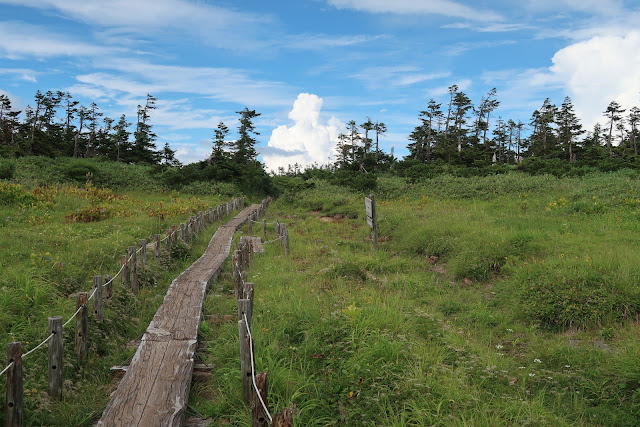
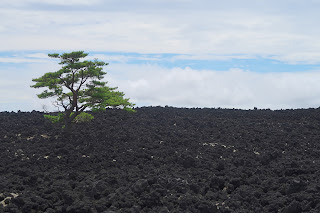

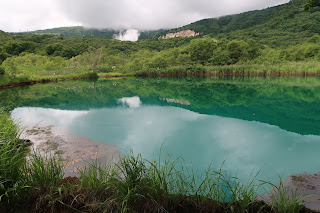
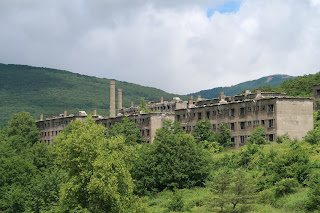
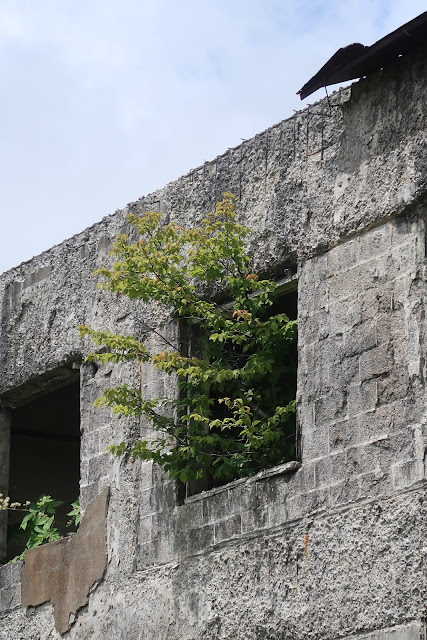

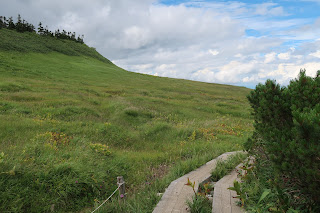
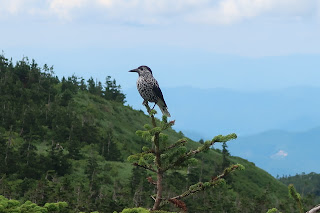











No comments:
Post a Comment